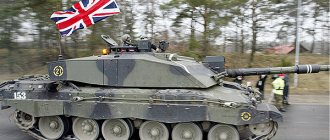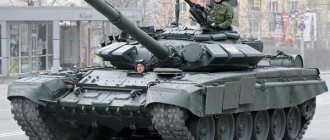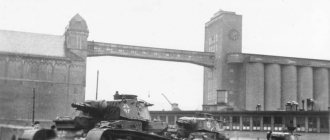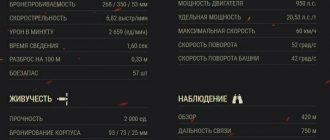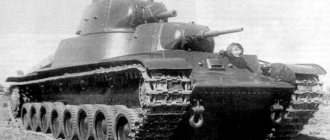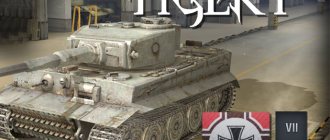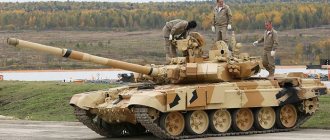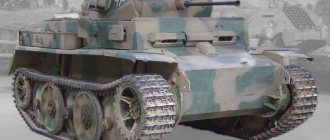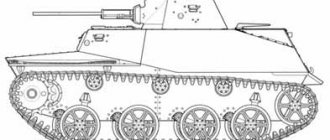Home » Alternative tank building » PanzerKampfWagen IV “Gepard” ausf G - The main tank of the Second Reich in the 40s of the XX century.
Editor's Choice Alternative Tank Building
AlkisTer 03/19/2019 1588
14
in Favoritesin Favoritesfrom Favorites 7
As a continuation of the previous blog entry, I made a 3D model of an AI tank for the German Empire from a world where the GI has not collapsed, but is the world leader in alliance with Russia.
General idea and layout:
In the early 40s, the Germans were faced with the problem that their fleet of armored vehicles was rapidly becoming obsolete morally and physically due to the intensification of local conflicts using armored vehicles around the world. The tanks in service could no longer fully cope with the realities of battle. Following the emergence of a new generation of the Russian Main Tank, the Germans began developing their own new generation tank.
As a deep modernization of the tanks in service, as well as using the latest inventions, the Cheetah tank was developed. Taking as a basis the layout traditional for their school of tank building, they radically improved the performance characteristics of the tank, introducing many innovations, in particular - an automatic loader and a “swinging” turret.
Under the influence of the Russian school of tank building, the Germans use inclined VLD armor instead of the previously common “Square, practical, gut”. However, technological chopped forms are very common. Casting is almost not used (only the turret forehead).
The biggest changes concern the turret - instead of the classic turret, a “swinging” turret of the original design is installed with the installation of an automatic loader. At the same time, the layout of the automatic loader is similar not to the French RI (i.e. its placement in the turret niche), but to the American one (i.e. the placement of the machine gun below the turret shoulder strap) for the possibility of charging the machine gun without leaving the tank.
The designers tried to simplify access to the engine and transmission as much as possible - as a result, the lower frontal part and rear armor plate are bolted. Without them, you can easily and quickly remove the engine and transmission.
Anti-aircraft self-propelled gun "Gepard"
35-mm self-propelled gun “GEPARD”
Since 1950, the American M42 ZSU with twin 40 mm cannons has been the standard mobile air defense system of the Bundeswehr. However, it could only be used during daylight hours and gradually ceased to meet modern requirements. In the early 60s, the Bundeswehr announced its readiness to consider proposals for a new ZSU capable of fighting enemy aircraft at any time of the day. The development of such a combat vehicle began back in 1955 and continued intermittently for ten years. A number of prototypes were built, but none met the military's requirements. Ultimately, two different prototypes were built and tested on a modified Leopard 1 main battle tank chassis. The Rheinmetall model, designated ZLA, was armed with twin 30-mm cannons, and the 5PZF-A model from Contraves was armed with twin 35-mm cannons. Both vehicles were equipped with radar. which made it possible to fire at air targets at any time of the day. After extensive testing, the Bundeswehr decided to continue development of the 5PZF-A, resulting in the construction of a further six prototypes under the designation 5PZF-B. After some time, the Dutch army became interested in the new ZSU and ordered a model for testing, called 5PZF-C and equipped with a detection and tracking radar manufactured by the Dutch company “Signaalapparaten”. The Bundeswehr ordered 420 5PZF-B self-propelled guns, the Belgian army ordered 55 units, and the Dutch armed forces ordered 100 5PZF-C vehicles. The Americans also tested the new ZSU, who at that moment also needed a mobile army air defense system. According to foreign press reports, the cost of one fully equipped Cheetah is more than $1.5 million.
The hull of the Gepard ZSU is similar to the hull of the standard Leopard-1 main battle tank. The main difference is the installation of a 71 kW auxiliary engine, designed to provide energy to the machine's electrical equipment. The artillery part of the Gepard ZSU includes two 35-mm KDA Oerlikon cannons and a double belt feed mechanism, which allows firing various types of projectiles. The guns are installed in a circular rotation turret and are aimed in a vertical plane in a sector from -5° to +85°. The gun drive is completely electric, but in case of failure there are manual aiming mechanisms. The overall rate of fire is 1,100 rounds per minute and ensures the destruction of air targets flying at speeds of up to 350-400 m/s at slant ranges from 0.1 to 4 km and at altitudes of up to 3 km. Each gun is equipped with a sensor that measures the initial velocity of the projectile and transmits this data to the on-board computer of the fire control system. The ZSU's ammunition load is 680 rounds, 40 of which are armor-piercing. In order to change the type of ammunition, the gunner only needs a few seconds. The rate of fire of each gun is 550 rounds per minute, spent cartridges are removed automatically. The gunner can set the required firing mode and fire with single shots, bursts of 5 or 15 shots, or a continuous burst. When firing at air targets, the firing range is 4000 m. The ZSU model adopted by the Bundeswehr is also equipped with two blocks of four smoke grenade launchers each, mounted on the sides of the turret. In the Dutch model there are two more such grenade launchers on each side. “Gepard” is equipped with an MPDR-12 detection radar and an “Albis” target tracking radar operating in the frequency ranges of 1500-5200 MHz and 15350-17250 MHz, respectively. The range of both stations is 15 km. In the second half of the 70s, a new target designation radar MPDR-18S was created with a detection range of up to 18 km. Its operating range is 1.7-2cm. The detection radar has a coefficient of suppression of reflections from local objects of 23 dB. The pulse and average powers of the station are 4 and 0.1 kW, respectively, and the pulse duration is 3.3 μs. The antenna, located at the rear of the tower, rotates at a speed of 60 rpm and forms a cosecant square radiation pattern in space, the width of which in the horizontal plane is 6.3°. The target tracking radar antenna, located under the radio-transparent radome, is installed on the front part of the tower and can be rotated in azimuth in a sector of 200°. This is necessary to ensure independence of rotation of the turret in the horizontal plane (when aiming guns at the aiming point) and tracking the target in azimuth. Both stations operate independently of each other, which allows, simultaneously with tracking the target selected for firing, to survey the airspace and search for new objects. For firing in conditions of widespread use of electronic warfare, the commander and gunner have optical sights with 1.5 and 6x magnification and a field of view of 50° and 12.5°, respectively. To solve the problem of meeting and determining lead angles in the horizontal and vertical planes Based on information about the parameters of the target's movement, the fire control system has two semiconductor analog computing devices, one of which is backup. The calculation of data for firing is carried out taking into account the angles of inclination of the ZSU body and the initial velocity of the projectiles, which is measured by special sensors installed on the muzzle of the barrels.
The Gepard self-propelled gun (in the Dutch army - SA 1) was designed to protect mechanized units marching in open areas with varied terrain complexity. The proven chassis of the Leopard tank, which serves as the basis for the ZSU, is the best way to accomplish this task. Thanks to him, “Gepard” calmly maneuvers in the zone of action of tanks. The detection radar is located behind the tower and, if necessary, is retracted inside. The radar antenna makes one revolution per second and is capable of detecting enemy aircraft at a distance of up to 15 km. After appearing on the radar screen, the target is identified. If this is an enemy aircraft, then the tracking radar located in front of the tower begins to track it (if necessary, this radar can be turned 180°, thus covering the antenna from fragments). The computer then aims the guns at the target and keeps them following it. When the target enters the affected area, the crew receives a corresponding signal and only then opens fire, which reduces ammunition consumption. It takes 20 to 30 minutes to reload gun magazines. The Cheetah is also equipped with optical sights that allow it to aim its guns and fire when moving over very rough terrain, although the vehicle usually stops to fire. The Gepard self-propelled gun is equipped with navigation equipment, communications equipment, an anti-nuclear and anti-chemical protection system, and automatic transfer mechanisms from the traveling to the combat position. The vehicle can cross a ford up to 2.25 m deep. Each Bundeswehr division, except the airborne division, has an anti-aircraft regiment consisting of six batteries. Each battery has two platoons, and each platoon has three Cheetahs. In total, the regiment has 36 Gepard self-propelled guns. In addition to Germany, these installations are in service with the armies of the Netherlands and Belgium, and the Dutch ZSUs are equipped with a target detection radar of their own design, operating in the frequency range 8-10 GHz.
Tactical and technical characteristics of the 35-mm ZSU “Gepard”
Combat weight, t – 45 Crew, people. – 3 Overall dimensions, mm: length with guns forward – 7700 length with guns back – 7270 width – 3250 height (with radar removed) – 3070 Armor, mm: 10-70 Armament: 2x35 mm KDA “Oerlikon” cannons, 8 smoke grenade launchers Ammunition: 680 rounds Firing range, m – 4000 Engine: MTU MB 838 Ca M500, 10-cylinder multi-fuel liquid-cooled diesel, power 619 kW at 2200 rpm Specific ground pressure, MPa – 0.093 Maximum speed on the highway, km/ h – 65 Cruising range on the highway, km – 600 Obstacles to be overcome: wall height, m – 1.15 ditch width, m – 3.0 ford depth, m – 2.25
Accommodation of the tank crew and basic performance characteristics:
The dimensions of the tank are:
Height: 2700 mm.
Width: 3500 mm.
Length without gun: 6250 mm.
Length with gun: 7500 mm.
The estimated weight of the empty tank is 25 tons for the basic version and up to 30 tons for the version with reinforced armor.
In the basic version, the reservation is:
Body forehead:
Top – 45 mm at an angle of 65 degrees; bottom – 60 mm at an angle of 45 degrees;
Body side – 30 mm;
The forehead of the tower base is 100 mm;
The forehead of the swinging part of the tower is 60 mm at an angle of 55 degrees; Turret side – 35mm; The rear of the turret is 25 mm.
The crew consists of 4 people: commander, gunner, driver, loader.
The commander and gunner are located in the turret, to the left of the gun. The gunner's seat is in front of the turret, followed by the commander's seat with a commander's cupola.
The driver and loader are located in the front of the tank. Behind the loader, to the right of the gun, there is an automatic loader for 6 shells. Non-mechanized ammunition storage is located along the right side of the tank and on the floor of the fighting compartment. Each crew member has a personal hatch to exit the tank.
ZSU Gepard (Flakpanzer Gepard)
ZSU Gepard (Flakpanzer Gepard)
The Cheetah (Flakpanzer Gepard) is a German self-propelled anti-aircraft gun created in the 1960s and adopted by the Bundeswehr in 1973.
Tactical and technical characteristics of the Gepard self-propelled gun (Flakpanzer Gepard)
- Length 7.68 m, width 3.71 m, height 3.29 m
- Weight 47.5 t
- Crew 3 people
- Armor: regular steel
- Powerplant: 10-cylinder multi-fuel diesel engine MB 838 CaM500 with 830 hp. (610 kW) at 2200 rpm
- Auxiliary power unit: 4-cylinder multi-fuel diesel engine Mercedes-Benz OM 314 with 90 hp. (66 kW)
- Specific power 17.5 hp/t
- Maximum speed 65 km/h on the highway
- Armament: twin installation of 35-mm Oerlikon cannons, 8 smoke 76-mm grenade launchers
- Ammunition: 640 rounds, 40 anti-tank rounds
- Operational range 550 km
- Obstacle to be overcome: ford 1.2 m deep, wall 0.95 m high, ditch 3 m wide, elevation angle 30°
Gepard anti-aircraft self-propelled gun began to be developed in 1963 and entered service in 1973. The general development contractor is . The first car was released in December 1976. In 1969, 4 prototypes of the Gepard ZSU (Flakpanzer Gepard) began to be tested with weapons of 30 mm and 35 mm guns. On June 25, 1970, a decision was made to use 35-mm cannons on the ZSU.
ZSU Flakpanzer Gepard, view of the stern
Subsequently, the Gepard ZSU (Flakpanzer Gepard) underwent various types of modifications, depending on the improvement of electronics. Ultimately, the Flakpanzer Gepard ZSU can provide all-weather support to military units. Production in Germany of the Flakpanzer Gepard self-propelled gun was discontinued in 2010.
The Gepard ZSU (Flakpanzer Gepard) was developed on the basis of the Leopard 1 main battle tank, where instead of a tank turret there is a circular rotation turret with two automatic 35-mm Oerlikon cannons on its sides and two radar stations (radars). The search radar is located in the rear of the turret, and the tracking radar and laser range finder are located in the front of the turret between the guns. The target detection range by radar is 15 km.
The rate of fire of each automatic cannon is 550 rounds per minute, and the combined rate of fire is 1,100 rounds per minute. The length of the gun barrel is 90 calibers. The initial projectile speed is 1,440 m/sec. The effective firing range is 5,500 m. Blocks of smoke grenade launchers are installed on both sides of the turret.
ZSU Gepard
The electric turret rotation drive of the Flakpanzer Gepard is powered by a 40 kW generator driven by a 4-cylinder multi-fuel diesel engine "Mercedes-Benz" OM 314 with a power of 90 hp. (66 kW).
The Flakpanzer Gepard anti-aircraft self-propelled gun (ZSU) had a slightly modified chassis of the Leopard 1 main battle tank with a 10-cylinder multi-fuel diesel engine MB 838 CaM500 with a power of 830 hp. (610 kW) at 2,200 rpm crankshaft and MTU transmission. Fuel consumption depends on the skill of the driver and road conditions and is about 150 liters per 100 km. The capacity of the fuel tanks is 985 liters.
The Flakpanzer Gepard ZSU uses a 4HP-250 type gearbox and an exhaust system with fresh air to reduce thermal visibility.
The auxiliary power unit is designed to operate the ventilation system, fire control and radar when the main engine is not running.
The chassis of the Flakpanzer Gepard ZSU is identical to the Leopard 1 tank and consists of 7 road wheels, rear drive and front driven wheels on each side. Torsion bar suspension.
There are two variants of the Gepard ZSU (Flakpanzer Gepard), differing from each other in the installation of radar types. The German version of the Gepard ZSU (Flakpanzer Gepard) has search and tracking radars operating at a range of 15 km, and the Dutch version has a search radar operating at a range of 15 km, and a tracking radar at a range of 13 km.
55 German-modified vehicles were produced for Belgium, and 95 vehicles with Philips radars were produced for Holland.
